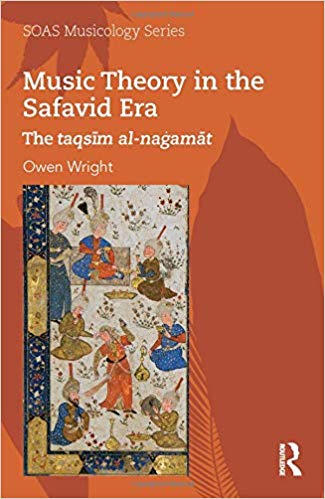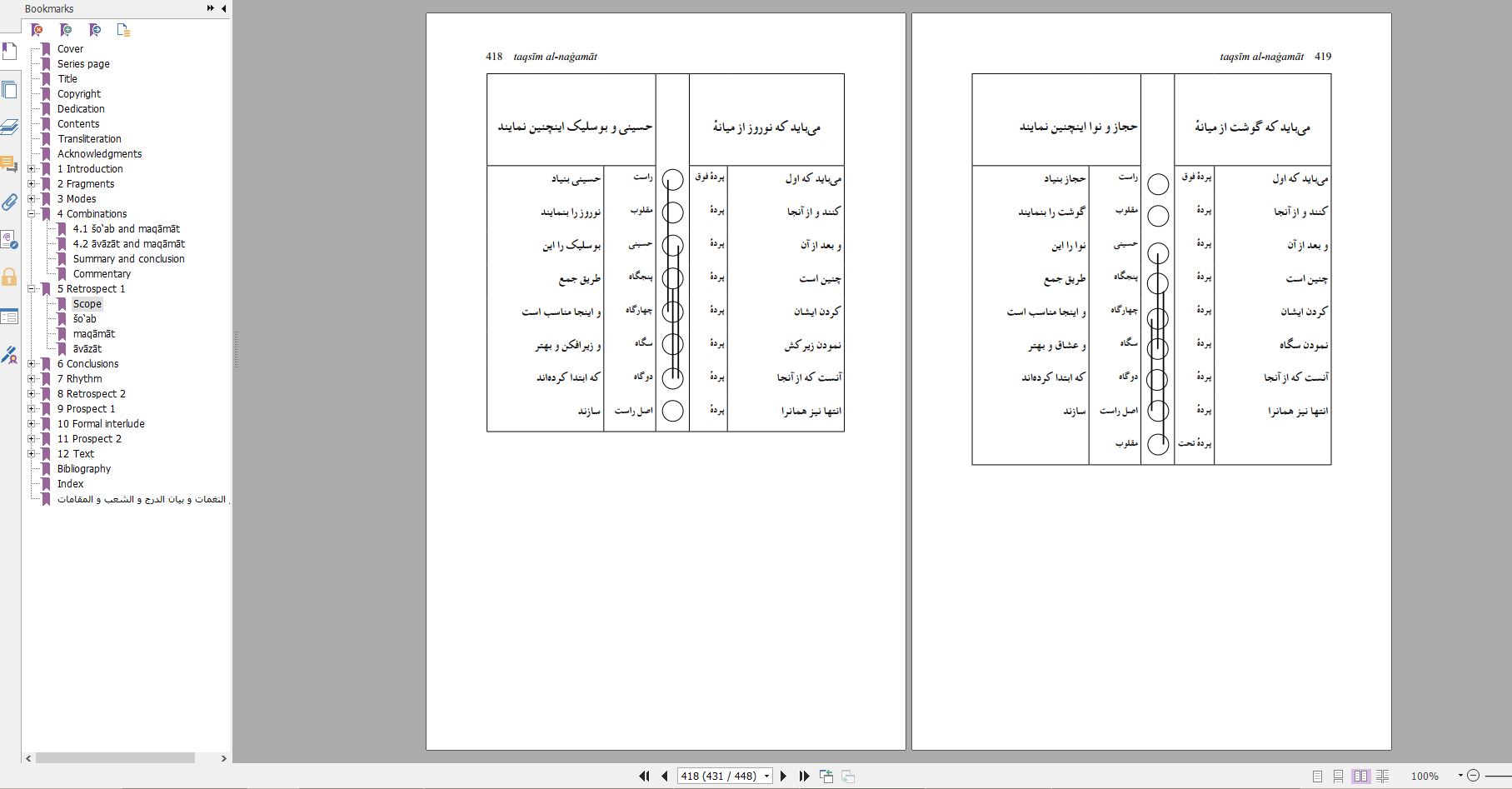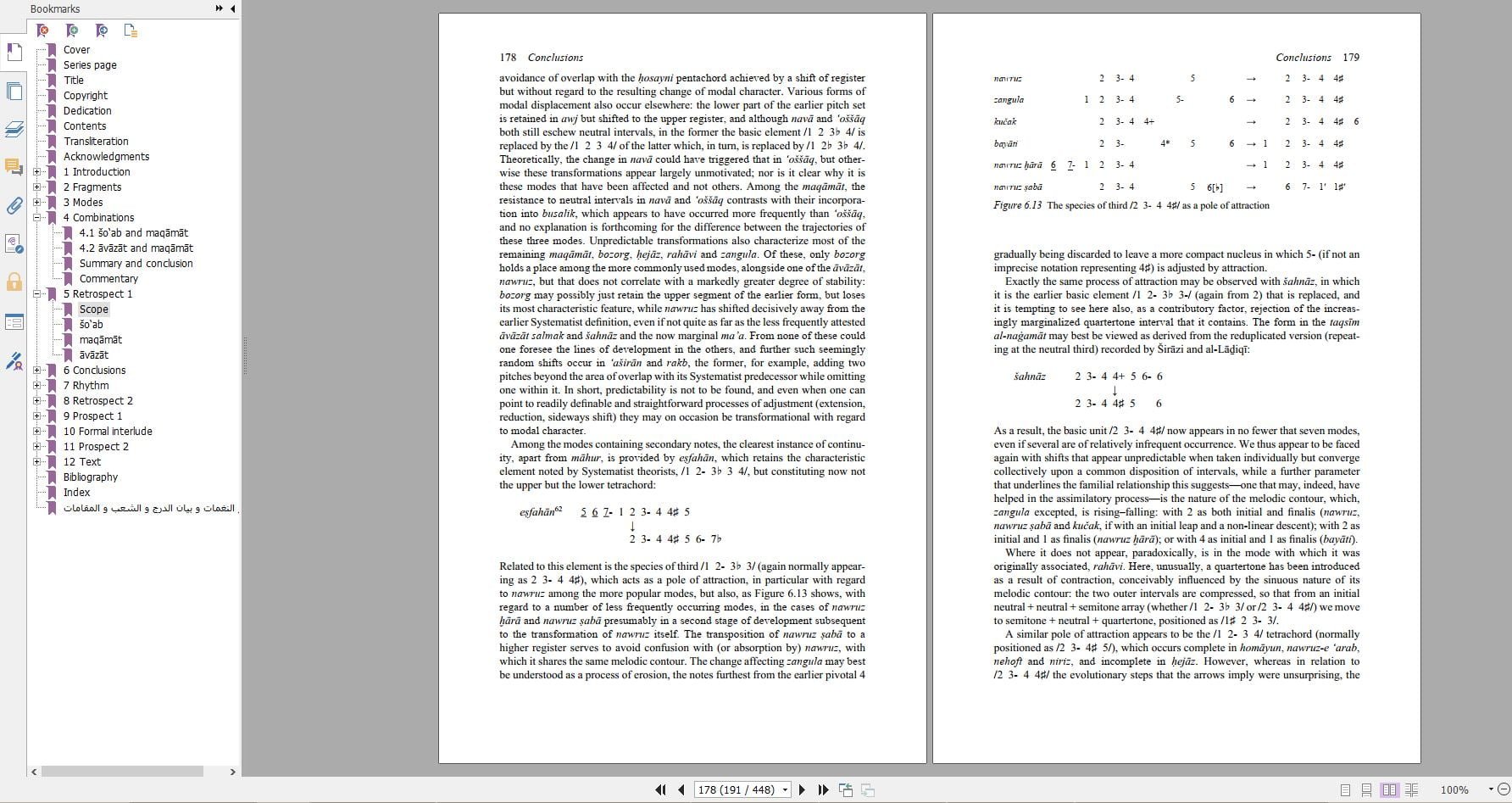
دانلود کتاب Music Theory in the Safavid Era
جهت دانلود کتاب Music Theory in the Safavid Era با ما مکاتبه کنبد. کتاب Music Theory in the Safavid Era پس از واریز هزینه ارسال میشود. ایبوک 113806243X در آرشیو گیگاپیپر موجود است.

Music Theory in the Safavid Era: The taqsīm al-naġamāt (SOAS Musicology Series) 1st Edition
by Owen Wright (Author)
Series: SOAS Musicology Series
Hardcover: 448 pages
Publisher: Routledge; 1 edition (October 8, 2018)
Language: English
ISBN-10: 113806243X
ISBN-13: 9781138062436
Price: 10$
Free Download Some Pages Before Pay
درباره ایبوک Music Theory in the Safavid Era
The Safavid era (1501–1722) is one of the most important in the history of Persian culture, celebrated especially for its architecture and art, including miniature paintings that frequently represent singers and instrumentalists. Their presence reflects a sophisticated tradition of music making that was an integral part of court life, yet it is one that remains little known, for the musicological literature of the period is rather thin. There is, however, a significant exception: the text presented and analysed here, a hitherto unpublished and anonymous theoretical work probably of the middle of the sixteenth century. With a Sufi background inspiring the use of the nay as a tool of theoretical demonstration, it is exceptional in presenting descriptive accounts of the modes then in use and suggesting how these might be arranged in complex sequences. As it also gives an account of the corpus of rhythmic cycles it provides a unique insight into the basic structures of art-music during the first century of Safavid rule.
درباره نویسنده کتاب Music Theory in the Safavid Era
Owen Wright is Emeritus Professor of Musicology of the Middle East at the School of Oriental and African Studies, University of London.
فهرست کتاب نظریه موسیقی در عصر صفوی
Cover
Series Page
Title
Copyright
Dedication
Contents
Transliteration
Acknowledgments
1 Introduction
Prelude
The taqsīm al-naġamāt
2 Fragments
The introduction
Descriptive method
3 Modes
Organization
3.1 maqāmāt
3.2 šo’ab
3.3 āvāzāt
Commentary
4 Combinations
4.1 šo’ab and maqāmāt
4.2 āvāzāt and maqāmāt
Summary and conclusion
Commentary
5 Retrospect 1
Scope
šo’ab
maqāmāt
āvāzāt
6 Conclusions
Modulatory sequences
Frequency
Patterns of distribution
Patterns of change
The Arabic dimension
Summary
7 Rhythm
The textual landscape
The catalogue of cycles
Levels of skill
Differentials
Commentary
Growth
8 Retrospect 2
Information
Banā’i and the taqsīm al-naġamāt
The Safavid repertoire
Song-text data
Survey
Conclusions
9 Prospect 1
Distribution
Structure
Comparisons
The longer view
Context
10 Formal interlude
kār and ‘amal
Range
The ‘Marāġi’ connection
żarb al-fatḥ
11 Prospect 2
Sources
Comparisons
Summary
12 Text
Arabic parallels
Manuscript
Edition
Bibliography
Index
دانلود رایگان Music Theory in the Safavid Era
برای اطمینان از کیفیت ایبوک Music Theory in the Safavid Era، دو صفحه از ان در ادامه آورده شده است.





